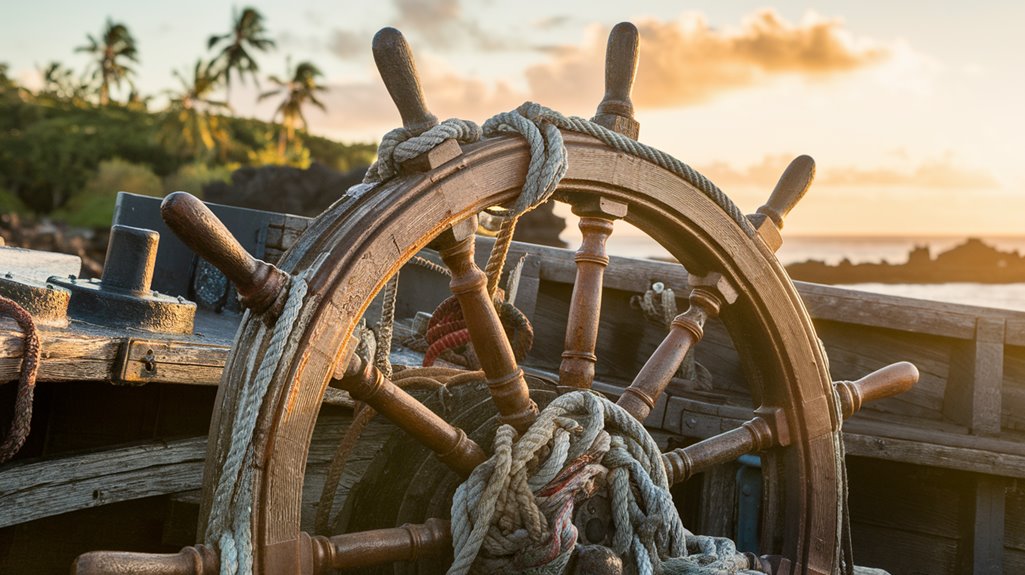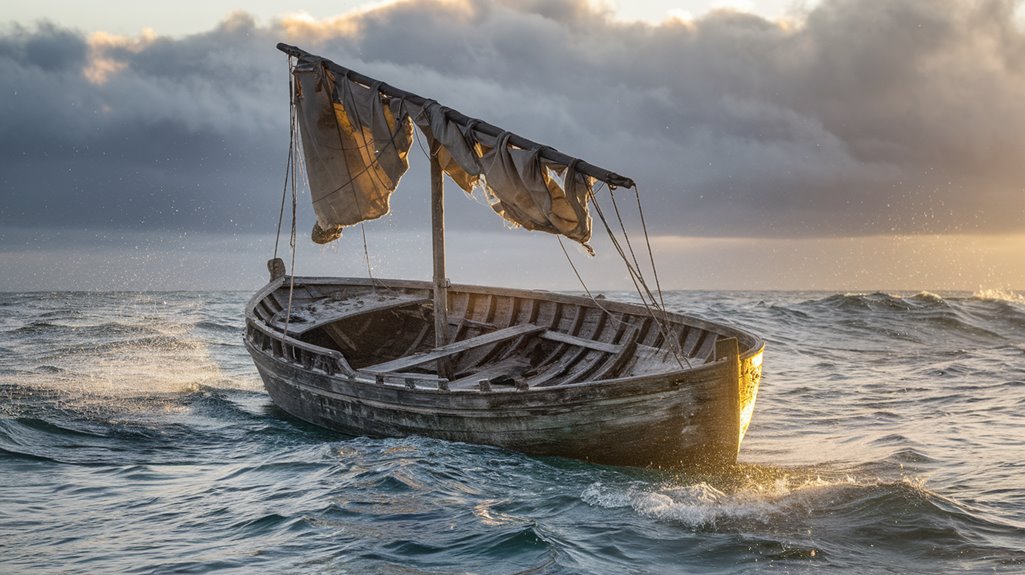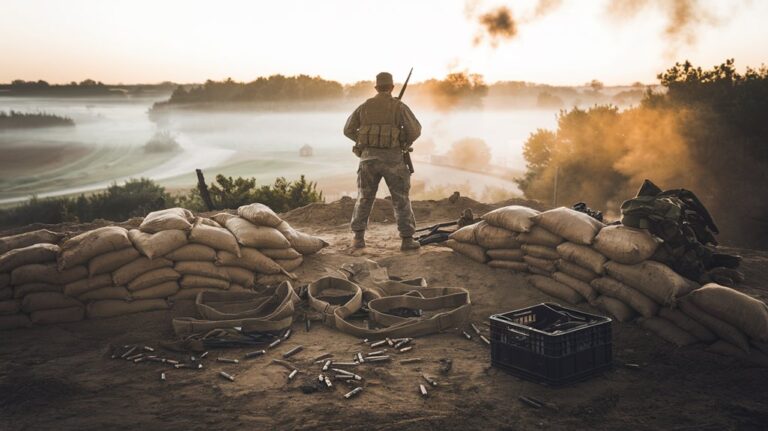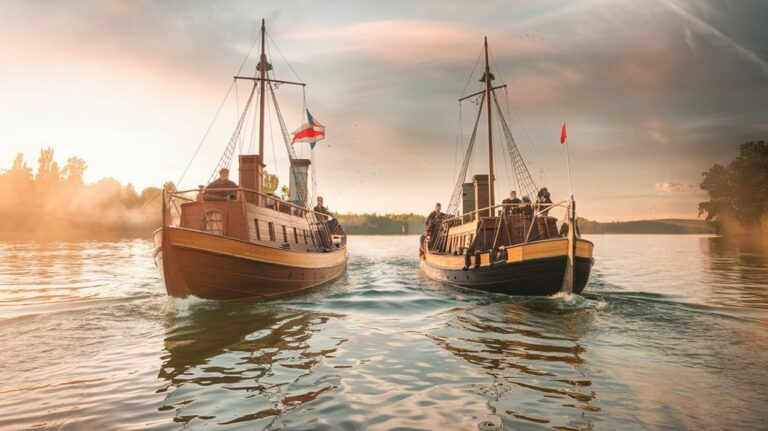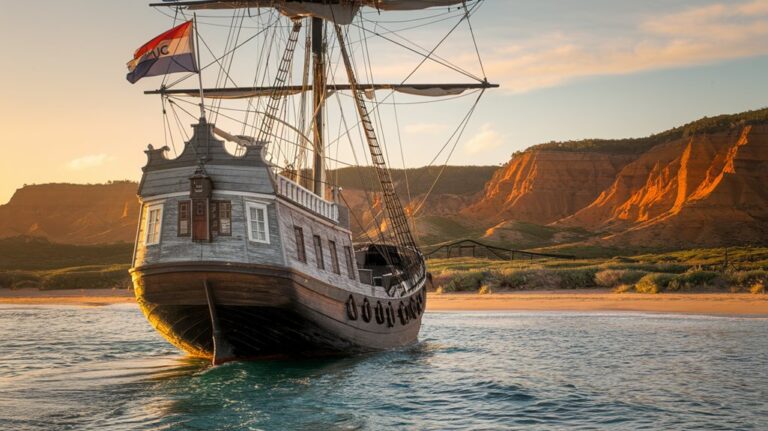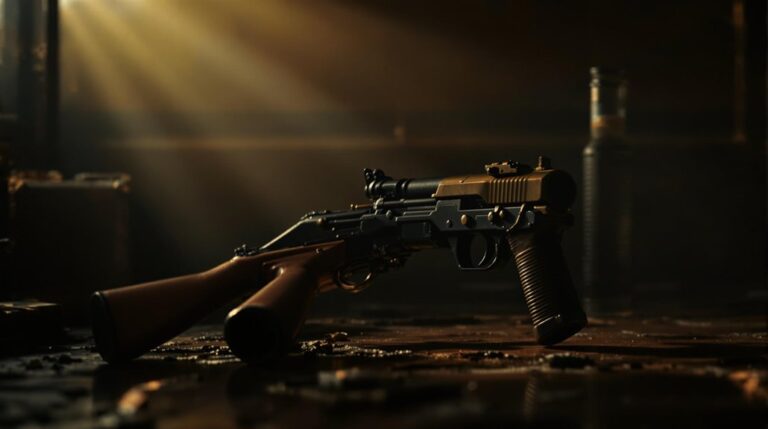Here Be Mutineers: The Dark Aftermath of the Bounty
You've likely heard of the Bounty's mutiny, but you don't know the whole story. What started as a routine voyage to transport breadfruit plants across the Pacific turned into one of history's most infamous maritime rebellions. Between the paradise of Tahiti and the harsh realities of 18th-century naval discipline, you'll find a tale where loyalty shatters, survival hangs by a thread, and paradise becomes a prison. The true darkness lies in what happened next.
Paradise Lost: The Seeds of Rebellion
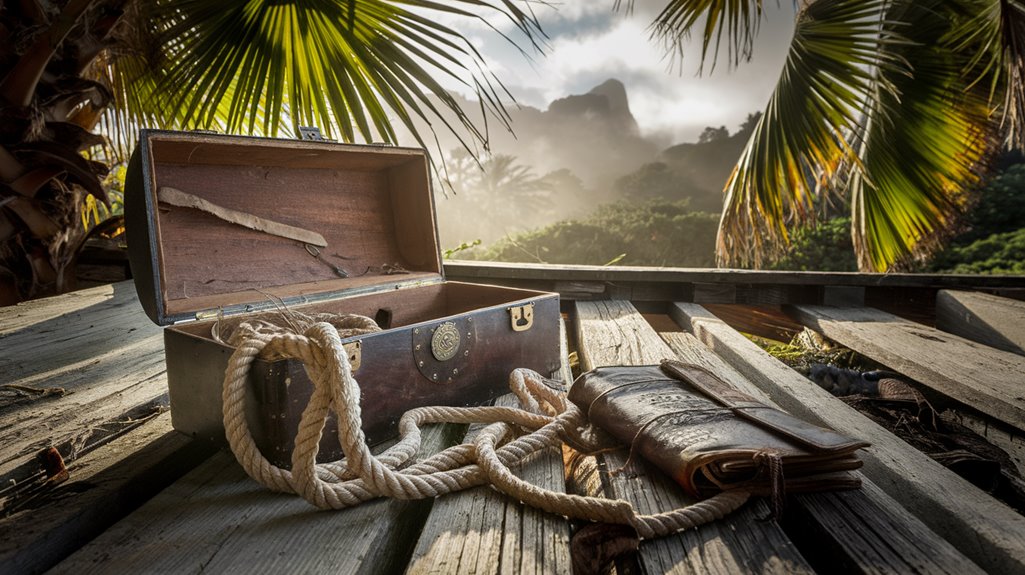
While life aboard HMS Bounty initially followed standard naval protocol, the crew's five-month stay in Tahiti forever altered their acceptance of maritime discipline.
You'll find that this cultural clash created an irreversible change in the sailors' mindset, as they traded the rigid structure of naval life for the freedoms of Polynesian society. They formed deep bonds with the locals and embraced a lifestyle that stood in stark contrast to the ship's strict hierarchy. The crew's involvement with local women led to widespread venereal infections among the sailors.
When you examine the authority breakdown that followed, it's clear that returning to Bligh's harsh naval discipline proved insurmountable for many crew members. Just 23 days after departure, the mounting tensions erupted into full-scale mutiny.
The stark shift from Tahitian paradise to the confines of the Bounty created a powder keg of resentment, particularly as Bligh's leadership style grew increasingly severe and Fletcher Christian became the target of his criticism.
Blood in the Pacific: The Mutiny Unfolds
The simmering tensions aboard HMS Bounty finally erupted on April 28, 1789, when Fletcher Christian and 18 fellow mutineers seized control of the ship.
You'd find their mutineer motivations weren't just rooted in their hatred of Captain Bligh – they'd fallen under the spell of Tahitian influence after months of living in paradise.
The rebels forced Bligh and 18 loyal crew members into a small boat, casting them adrift in the vast Pacific.
The lack of Royal Marines aboard contributed significantly to the breakdown of order and discipline on the vessel.
What drove these men to such desperate measures? Their time in Tahiti had shown them a different life – one of comfort, freedom, and romance with local women.
The stark contrast between their idyllic island existence and the harsh realities of naval discipline proved too much, pushing them to choose rebellion over duty.
After the mutiny, the HMS Pandora was dispatched to capture the rebels, leading to a dramatic pursuit across the Pacific.
Survival Against All Odds: Bligh's Epic Journey
After being cast adrift in a severely overcrowded 23-foot launch, Captain Bligh and his 18 loyal crew members faced what seemed like certain death.
With just seven inches of freeboard, they'd have to navigate 3,500 nautical miles to safety.
You might wonder how Bligh's navigation techniques proved so effective with minimal tools. Armed with only a compass, quadrant, and Peckover's pocket watch, he charted a course to Timor while avoiding potentially hostile islands.
His leadership qualities shone as he rationed supplies to a mere ounce of bread and quarter-pint of water per man daily. The crew survived on 112 pounds of bread from early to late May during their harrowing journey. The initial provisions included 150 pounds of bread, which quickly dwindled during their ordeal.
After losing John Norton to hostile natives at Tofua, Bligh's decision to avoid further island stops proved vital.
Despite severe weather and dwindling supplies, his precise navigation and unwavering resolve guided the crew to survival.
The Price of Betrayal: Hunt for the Mutineers
Following news of the mutiny reaching London, Britain's Admiralty launched their relentless pursuit of Fletcher Christian and his fellow mutineers.
Captain Bligh's verbal abuse of his crew had been a major catalyst for the uprising.
You'd find HMS Pandora dispatched with orders to hunt down every last rebel, regardless of their mutineer motivations.
The long arm of naval justice reached Tahiti first, where several mutineers were captured and brought to face court-martial.
Three would pay the ultimate price at the gallows, while others received prison sentences or acquittals.
But Christian and his closest followers had already fled to remote Pitcairn Island, where they'd establish a settlement beyond the Navy's reach.
There, they'd face their own form of justice – internal conflicts led to bloodshed, with Christian and many others meeting violent deaths in their self-imposed exile.
The tragic mutiny had begun after spending five months in Tahiti collecting over 1,000 breadfruit saplings for transport to the West Indies.
Legacy of the Bounty: Echoes Through Time
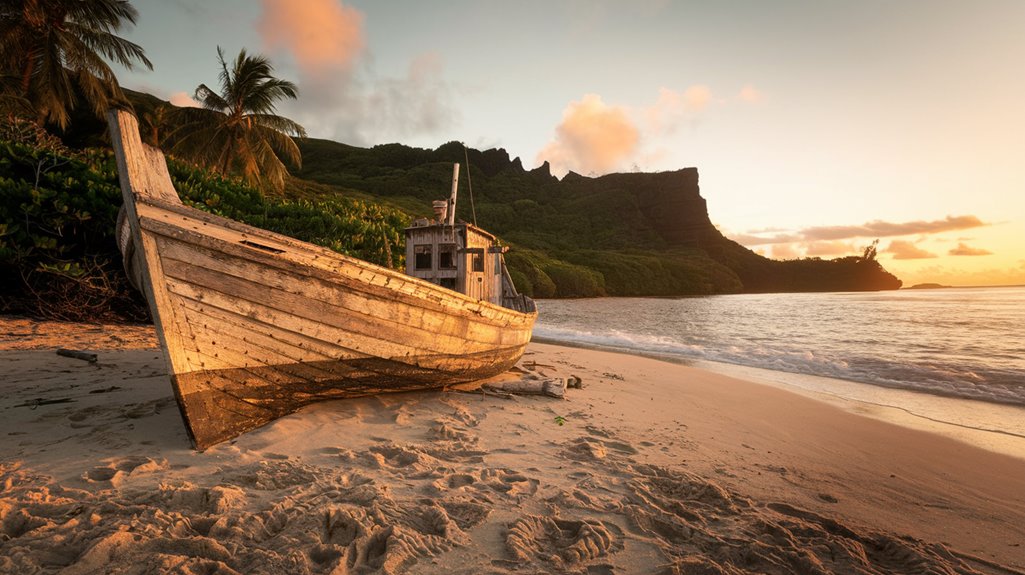
While justice caught up with many mutineers, their actions rippled far beyond their own fates, creating an enduring legacy that still fascinates us today.
You'll find the Bounty's influence everywhere: in naval reforms, literature, film, and even modern discussions about leadership and power dynamics.
The story's cultural resilience is evident in how it continues to shape perspectives on maritime history and colonial encounters.
 rare Polynesian insights through his detailed observations of Tahitian life and culture during his time there.
rare Polynesian insights through his detailed observations of Tahitian life and culture during his time there.
The descendant community on Pitcairn Island serves as a living proof of this complex heritage.
What began as a failed breadfruit expedition transformed into a cautionary tale that challenges you to examine human nature under extreme conditions, while contributing to our understanding of 18th-century maritime exploration and cross-cultural encounters.

